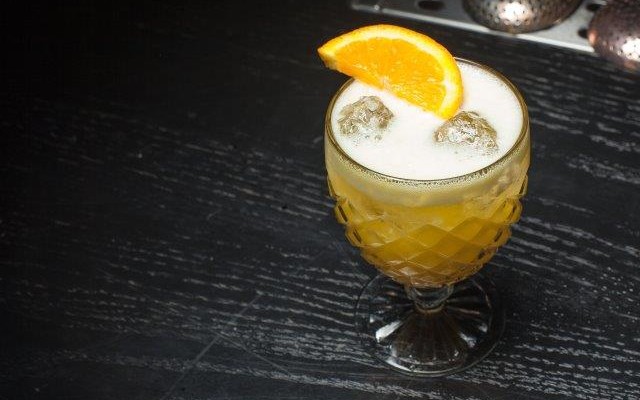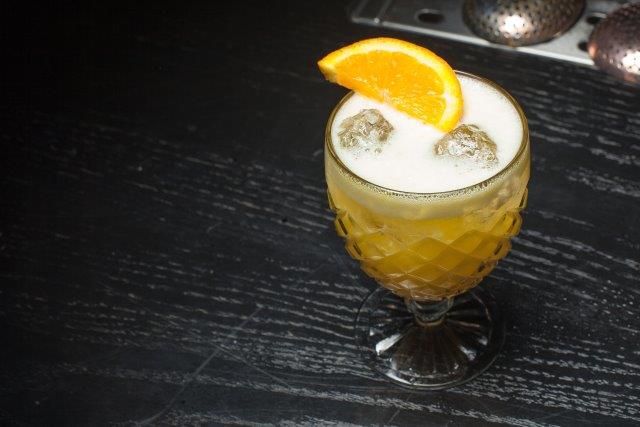
What is vodka?
Vodka is an alcoholic beverage that is composed primarily of water and ethanol. Traditionally, vodka is made from the distillation of fermented cereal grains or potatoes, though some modern brands use other substances like fruits or sugar. Distilled vodka can have a proof as high as 145. Proof is a measurement of the alcohol content. Each degree of proof equals a half-percent of alcohol. Thus, 100-proof is a liquid that contains 50 percent alcohol while 90-proof contains 45 percent and so on. Water is added to bring the proof down to a range between 80 and 100.
The practice of allowing certain grains, fruits and sugars to ferment and produce an intoxicating beverage has been around since ancient times. It was not until the 1930s that it began to gain popularity in Western Europe and North America. A British publication, The Savoy Cocktail Book, was the first to include recipes for vodka drinks.
There is disagreement among the Russians and Polish as to which country was the first to distill vodka, although most historical references credit Russia.
The drinking of vodka has been documented since the 4th century in eastern and northern Europe. In those regions, it was common to distill alcoholic beverages to a very high proof, eliminating any aroma or flavor. Vodka remained primarily an eastern and northern European preference for centuries.
By the mid-1960s, vodka nudged out gin in popularity and in 1976, it surpassed whiskey. By the end of the decade, the martini was more likely to be made with vodka than with its original main component of gin. At the close of the 20th century, vodka accounted for 25 percent of the distilled spirits market.
Until the middle of the 18th century, vodka production was essentially a home-based, one-pot operation called batching. Potatoes or grains were heated until the starch was released and converted to sugar. The resulting liquid matter was allowed to ferment, and then heating it at a high temperature to release the intoxicating vapors distilled the liquid.
So how is vodka made in the modern age?
The grain or vegetables are loaded into an automatic mash tub. Like a washing machine, the tub is fitted with agitators that break down the grain as the tub rotates. A ground malt meal is added to promote the conversion of starches to sugar. Preventing the growth of bacteria is very important in the creation of distilled spirits. First, the mash is sterilized by heating it to the boiling point. Then, it is injected with lactic-acid bacteria to raise the acidity level needed for fermentation.
Distillers either purchase the grain from suppliers, or grow it in company-owned fields.
The mash is poured into large stainless-steel vats. Yeast is added and the vats are closed. Over the next two-to-four days, enzymes in the yeast convert the sugars in the mash to ethyl alcohol.
The liquid ethyl alcohol is pumped to stills, which are stainless steel columns made up of vaporization chambers stacked on top of each other. The alcohol is continuously cycled up and down and heated with steam until the vapors are released and condensed. This process also removes impurities. The vapors rise into the upper chambers where they are concentrated. The extracted materials flow into the lower chambers and are discarded. Some of the grain residue may be sold as livestock feed.
The concentrated vapors, or fine spirits, contain 95-100 percent alcohol. This translates to between 180 and 200-proof. In order to make it drinkable, water is added to the spirits to decrease the alcohol percentage to 40 and the proof to 80. This is either purchased from outside suppliers or brought in from company-owned wells.
Alcoholic beverages are stored in glass bottles because glass is non-reactive. Other containers, such as plastic, would cause a chemical change in the beverage. The bottling procedure is highly mechanized as the bottles are cleaned, filled, capped, sealed, labeled, and loaded into cartons.
Most of the quality controls on vodka come from local, state and federal governments.
At the federal level, the Bureau of Alcohol, Tobacco and Firearms issues strict guidelines for production, labeling, importation, advertising and even plant security.
For example, charcoal-filtered vodka imports are not permitted. Flavored vodkas must list the predominant flavor (cherry, lemon, watermelon, etc.) on the label.
More than drinking?
I truly believe vodka is magic and can be used for things other than cocktails. Here is a list of 15 interesting and odd uses for vodka.
Stop ripping off the bandage!
To remove a bandage painlessly, saturate the bandage with vodka. The solvent dissolves the adhesive.
Stop breathing in harsh chemicals while cleaning the shower.
To clean the caulking around bathtubs and showers, fill a spray bottle with vodka, spray the caulking and let set five minutes before washing clean. The alcohol in the vodka kills mold and mildew.
Perfect skin? Easy!
Using a cotton ball, apply vodka to your face as an astringent to cleanse the skin and tighten pores.
Nice hair!
Add 1 1/2 oz. of vodka to a 12-ounce bottle of shampoo. The alcohol cleanses the scalp, removes toxins from hair, and stimulates the growth of healthy hair. (Use this twice a week). To treat dandruff, mix one cup vodka with two teaspoons crushed rosemary, let sit for a few days, strain through a coffee filter and massage into your scalp and let dry.
Get rid of bees & wasps.
Fill a spray bottle and spray bees or wasps to kill them.
Get rid of those nasty cold sores!
Using a Q-tip or cotton swab, apply vodka to a cold sore to help it dry out.
Tight shoes caused blisters?
If a blister opens, pour vodka over the raw skin as a local anesthetic that also disinfects the exposed dermis.
Stinky feet?
To cure foot odor, wash your feet with vodka.
Stung by a jellyfish?
Vodka will disinfect and alleviate a jellyfish sting.
Take it camping!
Pour vodka over an area affected with poison ivy to remove the poison oil from your skin.
Toothache!!!!
Swish an ounce of vodka over an aching tooth. Allow your gums to absorb some of the alcohol to numb the pain. (Do not swallow!)
Back to drinking
Here are a few cocktails to try…
The Perfect Martini
- 2 oz. Vodka
- 1/2 oz. Dry Vermouth
- 3 Pimento Stuffed Olives
- Shake over ice and pour into a chilled martini glass with olives.
Vodka Rose
- 2 oz. Vodka
- 1tsp. Grenadine
- 1 oz. Lemon Juice
- 1/2 tsp. Powdered Sugar
- Shake with ice and strain into a beer mug. Add ice cubes and garnish with fruit of your choice.
Waffle Shots
- 1 oz. Butterscotch Schnapps
- 1oz. Vodka
- 1 oz. Orange Juice
- Shake with ice and strain into a shot glass.
Tropical Wind
- 1 oz. Vodka
- 2 oz. Cranberry Juice
- 1 oz. Pineapple Juice
- Stir over ice in a highball glass.
Southern Sphinx
- 1 1/2 oz. Vodka
- 1 1/2 oz. Peach Schnapps
- 3 1/2 oz. Cranberry Juice
- Pour into a highball glass over ice and stir.
Hassett Gravois is the famous Mixology Connoisseur and author. She is also Vegas 2 LA Magazines Beverage Director and Resident Mixologist










You must be logged in to post a comment Login